The day before yesterday, it was celebrated the 75 Birthday of a so famous piece by the Spanish musician, Joaquín Rodrigo "The Concert of Aranjuez"; so, I should like to show you that piece, in two versions: one classic, with pictures from La Alhambra (Granada, South eastern Spain), and another modern, by Paco de Lucía and an Orchestra.
If you want to watch these two videos, please click on the links below:
https://www.youtube.com/watch?v=UNqtCsCqCD8
https://www.youtube.com/watch?v=hxbDLnaAvAE
Joaquin Rodrigo (Sagunto, 1901-Madrid, 1999), a time, said the sentence “My glass is small, but I drink in my glass”; he said it, many times, throughout his life; today it is still present in his epitaph. One way to define the place, in the world, of this man, who connected the oldest Spanish musical tradition with the explosion of the avant-garde and even with popular music. "The important thing was to follow my own way", the master explained, in 1991, on the occasion of his 90th birthday.
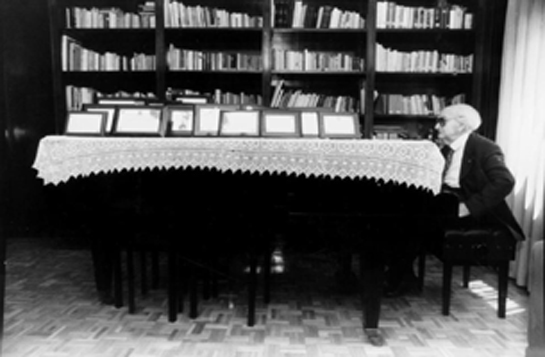
Joaquin Rodrigo and his piano
And, however, if we look at the spread and popularization of his work, the glass of Rodrigo housed one of the greatest phenomena of Spanish music of all time. Falla, Albeniz, Granados and Turina got that their pieces went out of Spain and went over the world. But none of them reached the heights it reached Rodrigo's Concierto de Aranjuez. Interpreted in thousands of versions, humed by music-lovers and profanes, a piece of reference, but which is eclipsed of the rest of the production of Joaquin Rodrigo. The Concert of Aranjuez was performed on November 9, 1940, at the Palau de la Musica Catalana, in Barcelona, played by Regino Sainz de la Maza, to the guitar, and the Philharmonic Orchestra of Barcelona, directed by Caesar Mendoza Lasalle.
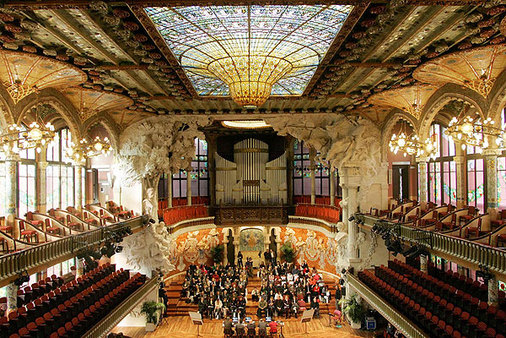
Palau of de Music at Catalonia
The piece has an air of inaugural and unique moment, for various reasons. It is the first work composed for Spanish guitar and orchestra, but also marks the beginning of the postwar period, in the musical chronology of our country, at a particularly bleak, marked by the destruction of the Civil War and exile of much of the intellectual and Spanish artists (including musicians) to America and Europe. A period also hit by the advance of Nazism, with Wagnerian alibis, destroyed, in its wake, any art that it deemed "degenerate".
In his writings, edited and available on the website of the Victoria and Joaquín Rodrigo Foundation, the composer remembers so the moment of the creation of the concert. Installed in Paris since 1927, where he studied with Paul Dukas --and he met the Turkish pianist, Victoria Kamhi, with whom he married in 1933--, Rodrigo began a trip to Spain, during the Civil War."In September 1938, I passed through San Sebastián, way to France (...) The Marquess of Bolarque brought us to eat, Regino Sainz de la Maza and me. We ate well and we did not drink bad.. The moment was conducive to fantasy and daring", evoked the composer, in a story, again, with glasses involved. "Suddenly, Regino, with that tone among fickle and determined how well characterizes him, said: - “Man, you have to come back with a concert for guitar and orchestra”. In order to touch me, he added with a pathetic voice: “It is the dream of my life” And, as it is said today, in order to suck up to me--, he continued: “You are called to do it, something like chosen”. I drained two consecutive glasses of the best Rioja and I cried with the most convinced tone of the world: “- Man, that's done!”. The scene has been deeply impressed me, because that night was a pleasant memory in my life, and a moment of peace in those (hours) nothing threatening quiet for Spain and menacing for Europe".
"The scene has been deeply impressed me, because that night was a pleasant memory in my life, and a moment of peace in those (hours) nothing quiet for Spain and threatening for Europe".
Rodrigo composed the concert, in his studio, at 159 Rue Saint Jacques, in the Latin Quarter of Paris. While the Spanish Civil War was coming to an end and the final victory of Franco, another war was brewing in Europe. "I was fond of me with the idea, to force difficult to judge, I heard me singing in the whole subject of the Adagio, in one go, without hesitation, and ... then, with little transition, the third time. I quickly realise that the work was done. Our intuition does not deceive us in this ... ", Rodrigo recalled about the writing process, during those months, in Paris. "If the Adagio and the final Allegro took me something like inspiration, that irresistible and supernatural strength, I arrived to the first time for reflection, calculation and will. It was the last time of the three of them. I finished the work over where I should must having started ".
The September 3 -1939, two days after the start of the World War II, Joaquín and Teresa entered Spain, from the French border, bringing the manuscript of the Concert of Aranjuez, in braille. Rodrigo, nearly blind, since three years, because of a diphtheria, used a particular system for transcription of his ideas. First, he writed the musical notation, in Braille, which then went over a pentagram, with the help of a copyist. Later, he performed the corrections, together with Teresa, and finally he presented the final score. A procedure that has been recently discussed, in the Residence of Students, in Madrid, by Cecilia Rodrigo, daughter of Joaquín and Teresa, on the occasion of the 75th anniversary of the premiere of the work.
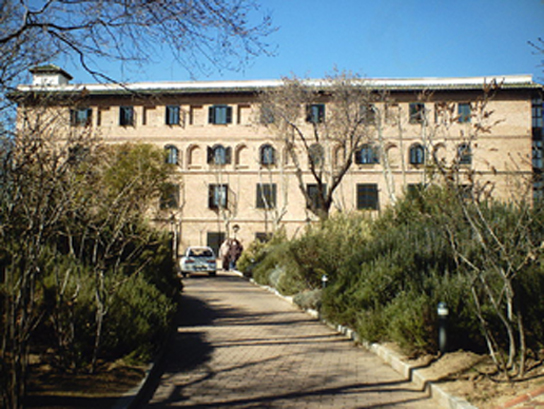
Residence of Students
The Concert of Aranjuez also represents an unique case, as it offers the listener the transmission of a very specific sensory experience, in the gardens of the Royal Palace of Aranjuez, where the birdsong, the smell of flowers and the freshness of the sources take precedence over the visual experience or the architectural enjoyment, that often inspire compositions of this nature.
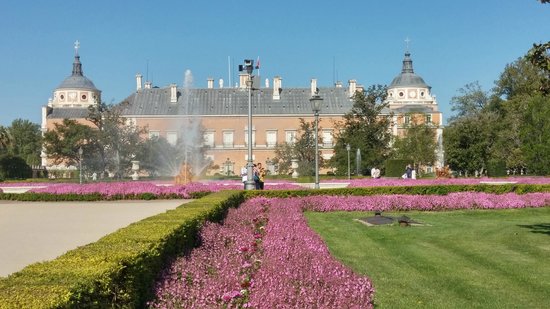
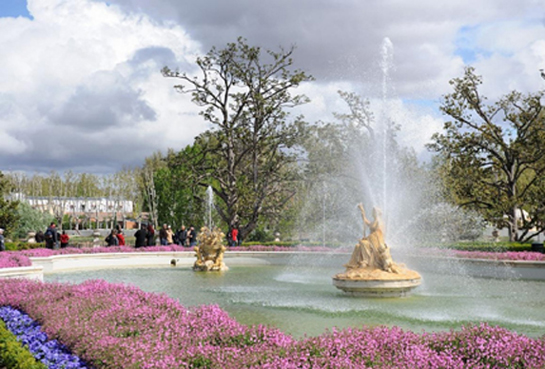
After the first concert recording, in 1948, the piece began its international journey, in 1950, with a great concert, in Paris, with Ataulfo Argenta, as director at the head of the National Orchestra of Spain, and Narciso Yepes, as lead guitarist. Ten years later, the definitive popularization came, when Miles Davis adapted the Adagio in “Sketches from Spain”. And since then, a multiplication process remain unknown purpose.
"The celebrity of a score can be never predicted", said the composer, to this newspaper, in 1991. "When I wrote it, I just thought that it went as well as possible, that it was played a lot and the public liked it. It also meant a kind of challenge, to write a concert, for guitar surrounded by an orchestra and achieve the desired balance. The case of this concert is very unusual, because it has become very popular and that does not happen with symphonic works, however good they are".
Well, I hope that you have enjoyed the two videos, at the beginning.
Until my next post, kind regards,
Luis.
Sponsored by Costaluz Lawyers.
Please click below:
